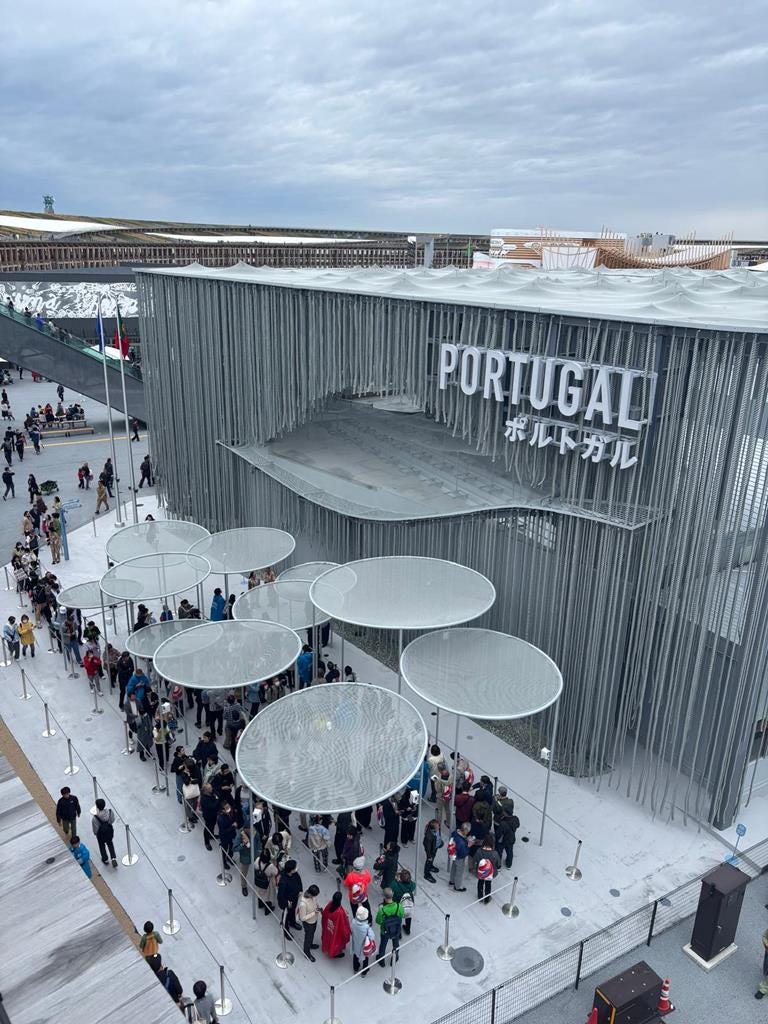Portugal pavilion shines on opening day of Expo 2025 Osaka
Renowned Japanese architect Kengo Kuma, who designed the pavilion, was also in attendance, engaging directly with visitors.

The World Expo 2025 in Osaka, Japan, opened with a strong start for Portugal, as the country’s pavilion welcomed nearly double the expected number of visitors.
Despite persistent rain that forced several pavilions to close, the Portuguese Pavilion remained open and received 13,124 visitors on its first day—well above the anticipated 7,000.
Joana Gomes Cardoso, Commissioner of the Portugal Pavilion, described the day as both demanding and rewarding, noting the enthusiastic response from the Japanese public.
The opening also drew notable figures including the Vice-President of Timor-Leste and government officials from Germany and the Czech Republic.
Renowned Japanese architect Kengo Kuma, who designed the pavilion, was also in attendance, engaging directly with visitors.
Located in the "Empowering Lives" zone of the Expo, the Portugal Pavilion is inspired by the theme “Ocean, Blue Dialogue” and reflects the country’s deep-rooted maritime heritage.
The structure features over 9,900 suspended ropes, recycled nets, and a wave-shaped suspended installation, creating a dynamic, immersive environment.
A five-minute audiovisual piece, developed by Portuguese firm MUSE, offers a reflection on the sustainable coexistence of humanity and the ocean.
Throughout the Expo’s 184-day run, which concludes on October 13, Portugal will present a robust cultural and economic program, including four seminars in Tokyo on topics such as Mobility (May 22), Life Sciences (July 1), Defense (August), and the Blue Economy (September 24).
These events aim to showcase Portugal’s innovation and strategic sectors, especially in sustainability, aerospace, and marine technology.
The pavilion will also promote eco-friendly Portuguese design products made from materials like cork, burel, and wicker.
Portugal’s official Expo mascot, Umi—a seahorse whose name means “ocean” in Japanese—symbolizes the centuries-old maritime connection between the two nations.
With a €21 million investment in its participation, Portugal aims to attract over 1.4 million visitors to its pavilion and boost tourism revenue from Japan to €100 million within three years.
According to Ricardo Arroja, President of AICEP, the Expo represents a “sea of opportunities” for strengthening economic ties between Portugal and Japan.
Portugal’s presence in Osaka reflects a broader strategy to expand its footprint in Asia, leveraging the Expo to deepen cultural and commercial relationships in the region.




Great design always pays even greater dividends. While Portugal has an abundance of talented architects and designers, it is an intelligent decision to use a local architect to show good will and universal good taste. Kuma designed the acclaimed recently completed CAM Museum in Lisbon. Portugal can use more cross country cooperation with all of Asia and can enhance its role as Asia’s front door to Europe.